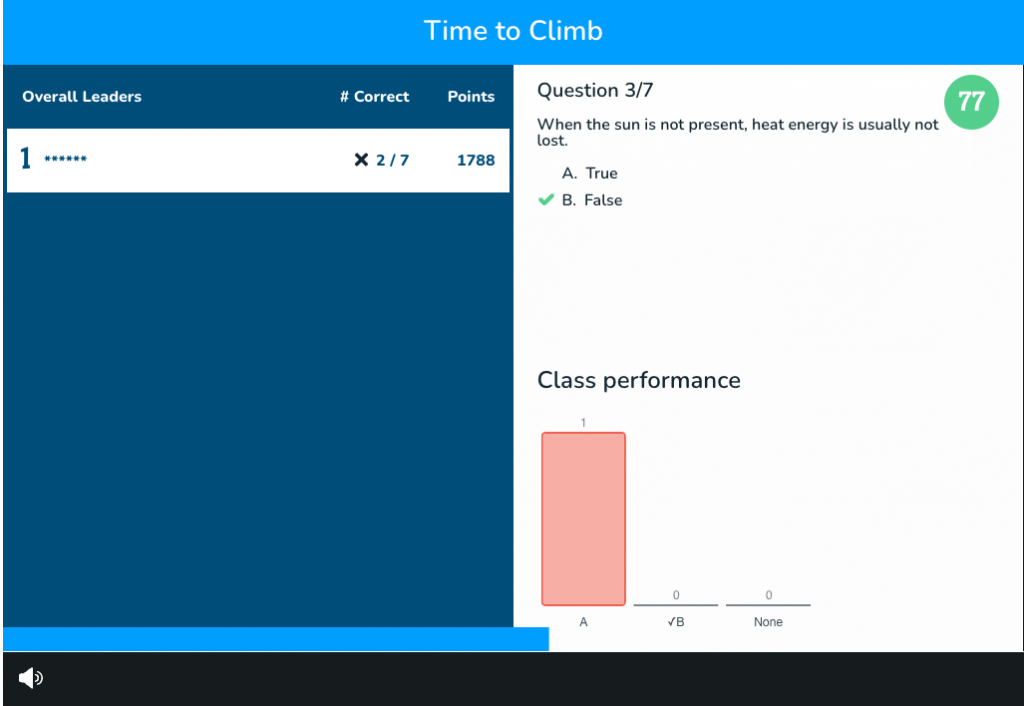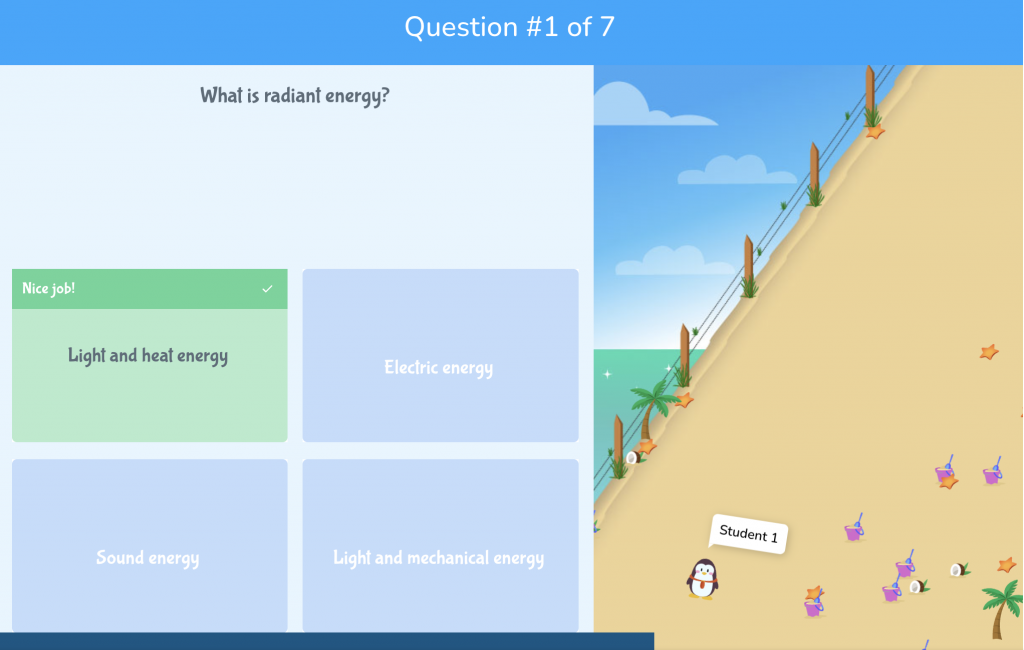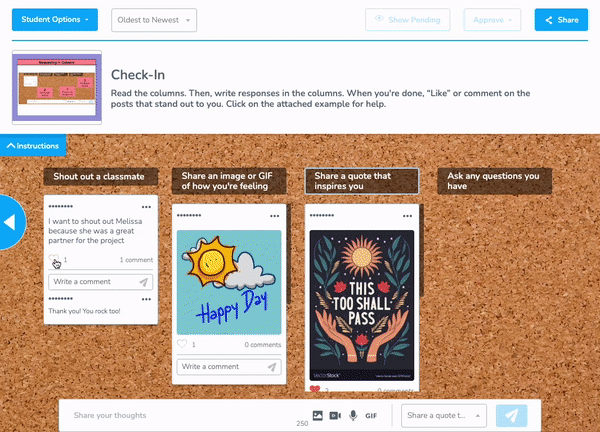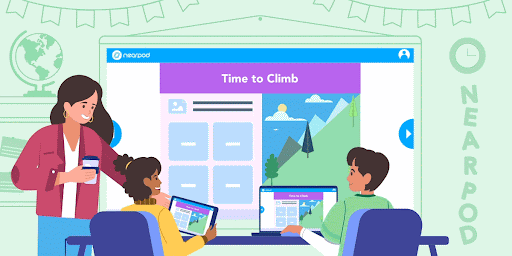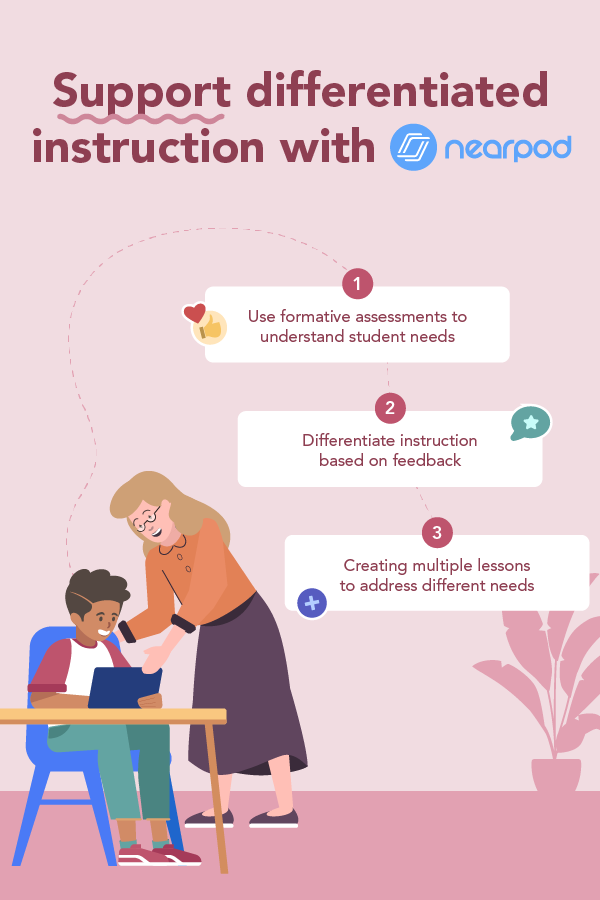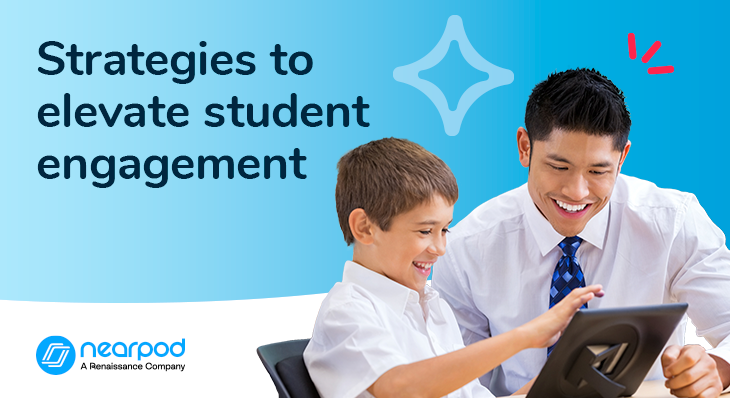
6 Strategies to elevate student engagement in the classroom
What is student engagement, and why is it important?
Student engagement refers to when students actively participate, contribute, question, personalize, and take ownership of their learning. There are usually some telltale hints, such as hands waving in the air, students jumping in their seats, and eyes literally sparkling. Student engagement strategies make a teacher’s job easier and fulfill their goal of developing students into lifelong learners.
Classrooms have changed and will continue to change as times evolve. Methodologies and pedagogies should shift as new philosophies, research, and technology come into play. Gone are the days of a “sage on a stage” preaching to rows of children.
Nearpod’s instructional platform supports both teachers and students in individualizing the learning process so growth and progress are optimized over time. Explore strategies to increase student engagement in your classroom with Nearpod’s support.
6 Strategies to elevate student engagement in the classroom
1. Leverage real-time insights
Formative assessment is the process through which teachers gather real-time feedback and evidence of learning to guide the next steps of their instruction. For instance, let’s say a teacher delivers a math lesson on finding the lowest common denominator. During a quick check for understanding, only half the class can accurately answer a question and correctly find the lowest common denominator. The teacher uses that evidence and most likely reteaches the concept before moving on. Such real-time insights are key to a teacher addressing not only the learning objectives and standards but also ensuring every student’s learning needs are being met, which will support classroom student engagement.
Nearpod was designed to give teachers these powerful real-time insights! Teachers have access to in-the-moment student responses. They can use this evidence of learning to share them with the whole class, address misconceptions in the moment, and modify instruction to support learning through these student engagement strategies. The intuitive Nearpod dashboard provides quantifiable data in a visual format, making it easier for a teacher to determine the next steps with a quick glance and a bit of instructional ingenuity. And it’s not just in-the-moment data: after completing a Nearpod session, teachers can review the post-session reports to inform their data-driven instruction further.
2. Active learning
Active learning quite simply means that the child is physically and mentally engaged in the learning at hand. Teachers use all sorts of traditional and innovative engagement strategies to promote such participation. From hands on heads to think-pair-share, teachers aim to invite each student to make personal or real-world connections to their learning. Teachers want each and every student to know they have a role and a responsibility as they enter the classroom.
When schools reopened for in-person learning after the COVID shutdowns, we saw endearing social media posts of teachers welcoming kids back into the classroom actively, where the kids chose the greeting—such a simple activity can help involve kids in their learning process.
Technology can also foster active learning. When using Nearpod for active engagement strategies, students are more actively involved in their own learning, with features and interactive activities that support many of the principles James Paul Gee highlighted in his 16 Principles of Good Video Game-Based Learning. Students are challenged cognitively and socially; many of Nearpod’s activities act as springboards for meaningful in-person conversations. Nearpod encourages students to have a sense of agency and be the drivers of their own learning.
3. Focus on student motivation
In a world of constant beeps, chirps, and buzzes, it can be hard for students to avoid distractions, stay focused, and be motivated to succeed and learn. Sure, we can use extrinsic motivators to give students a carrot or a brass ring to reach for. But ideally, our tactics lead them to find the internal motivation to accomplish a task at hand and take the next steps without much prodding.
Nearpod’s educational game, Time to Climb, provides friendly competition to incentivize engagement. As they make progress (moving or “climbing” up the mountain), their own intrinsic motivation grows, and their confidence and enjoyment build as they learn. Teachers can create their own version of this gamified multiple-choice quiz on any topic or use one of the hundreds of pre-made Time to Climbs available in Nearpod. These student-centered games motivate students and foster classroom engagement.
4. Student voice
Using Nearpod strategies for student engagement encourages all kids to employ high-order thinking skills, especially through interactive activities like Draw It and Collaborate Board. With Draw It, students use a drawing assessment tool to explore new concepts through visually rich approach and hands-on student engagement activities. And as a picture says a thousand words, they also can express themselves creatively in yet another manner. The Collaborate Board invites all students to the virtual table to exchange ideas. Students write their thoughts and ideas into a virtual bulletin board using text or rich media for everyone to see. This activity promotes the best of peer-to-peer learning as well.
5. Student choice
Now, onto the second part of that phrase: student choice. As part of their burgeoning independence, students are more actively engaged in their learning environment when they have a choice in what they are learning, how they are learning, and when they are learning. Such successful child-led learning opportunities help students develop in a safe environment. Student engagement will be at an all-time high as they explore, interact, inquire, and progress toward mastery. Maria Montessori wrote about the importance of this sense of agency and ownership in the 1800s.
The greatest sign of success for a teacher … is to be able to say, ‘The children are now working as if I did not exist
Maria Montessori
Nearpod’s thousands of pre-lessons allow teachers to tap into students’ various interests, as they can share various resources with different kids. A student can take a deeper dive into a topic by embarking on a Virtual Reality (VR) Field Trip or engaging in an Interactive Video. With their eyes on the real-time data, teachers can support students to work independently in the moment and progress at their own pace. This academic and emotional engagement will encourage them to be proud of their independent growth resulting in student success.
6. Differentiation
As part of a teacher’s quest to personalize and individualize instruction for students, they often showcase their artistry by modifying a lesson to meet the various needs within their classroom. Teachers can differentiate instruction through lessons by modifying the steps, amassing a variety of supporting resources, and appealing to various learning styles. Such differentiation will help increase student engagement by hooking their interest and appealing to their strengths in various ways.
With Nearpod, teachers can distribute a variety of resources to various children throughout a lesson. They can encourage students to personalize their Student Notes to help reframe a concept or further illustrate it. Teachers can also take an existing lesson, duplicate it, and modify it in several different ways, thus ending up with a variety of student engagement activities or lessons that take different paths to achieving similar learning objectives. Use Student-Paced mode to have students do independent or small group work.
Boost student engagement with Nearpod
Capturing students’ attention is paramount across all types of engagement strategies. Educators forever grapple with how to increase student engagement—it can be a daily pursuit if not a challenge. Those beloved teachers are often revered because they took the time to invest in students individually. They showed respect to their students by figuring out how to address their learning needs best and make them engaged in their own learning. A teacher’s craft truly is part science and part artistry!
New to Nearpod? Teachers can sign up for a free Nearpod account below to access these resources, interactive activities, and engaging lessons. Administrators can schedule a call with an expert to unlock the full power of Nearpod for schools and districts.

Darri Stephens is a dedicated LX (learning experience) designer, passionate about creating quality content and programs for kids, families, and educators. With MAs in Education from both Harvard and Stanford, and work experience at best-in-class ed tech organizations including Wonder Workshop, Nickelodeon, and Common Sense Education, she is steeped in the design thinking process and committed to agile and iterative project management, which has resulted in multi-award-winning programs and products.
